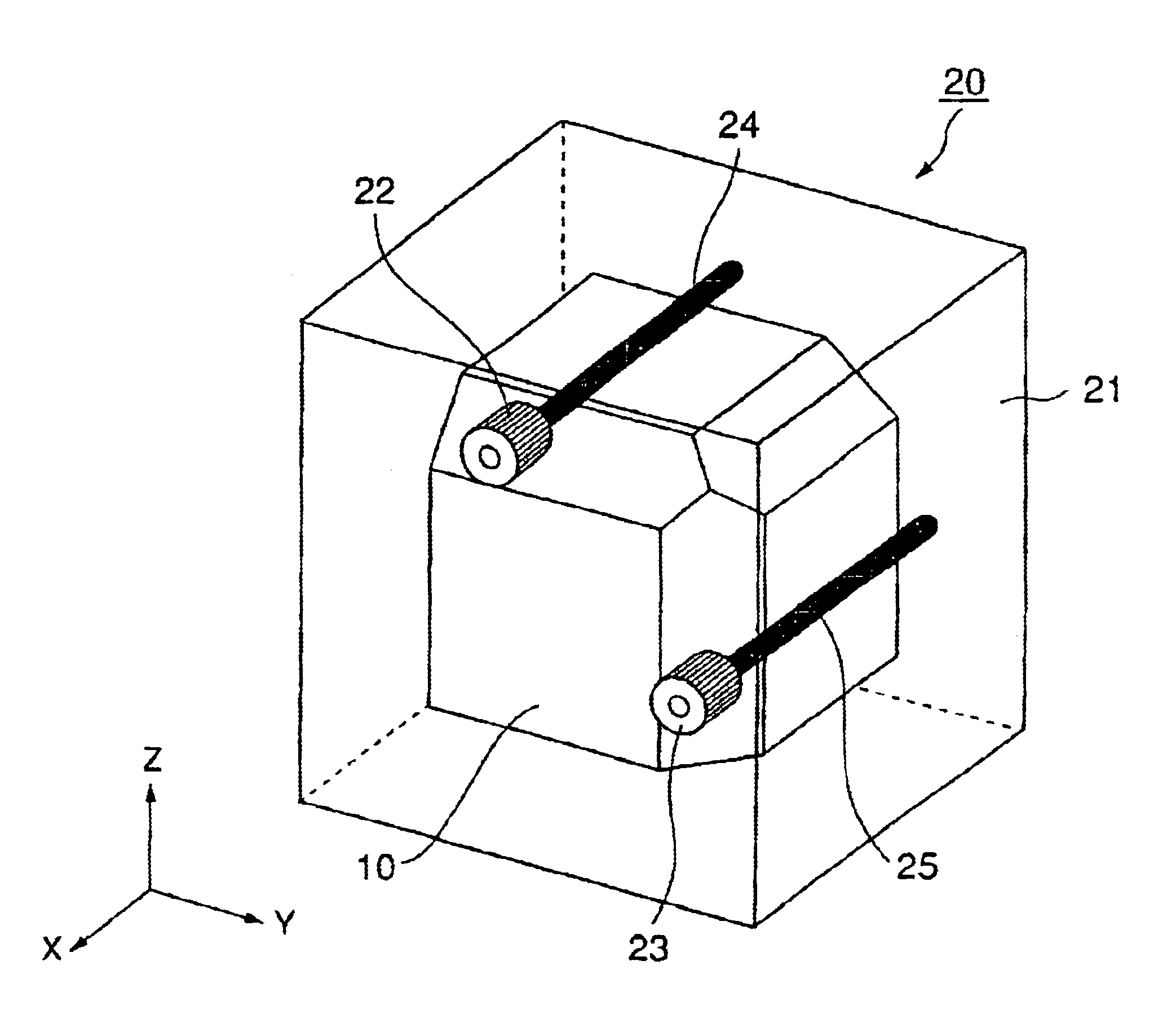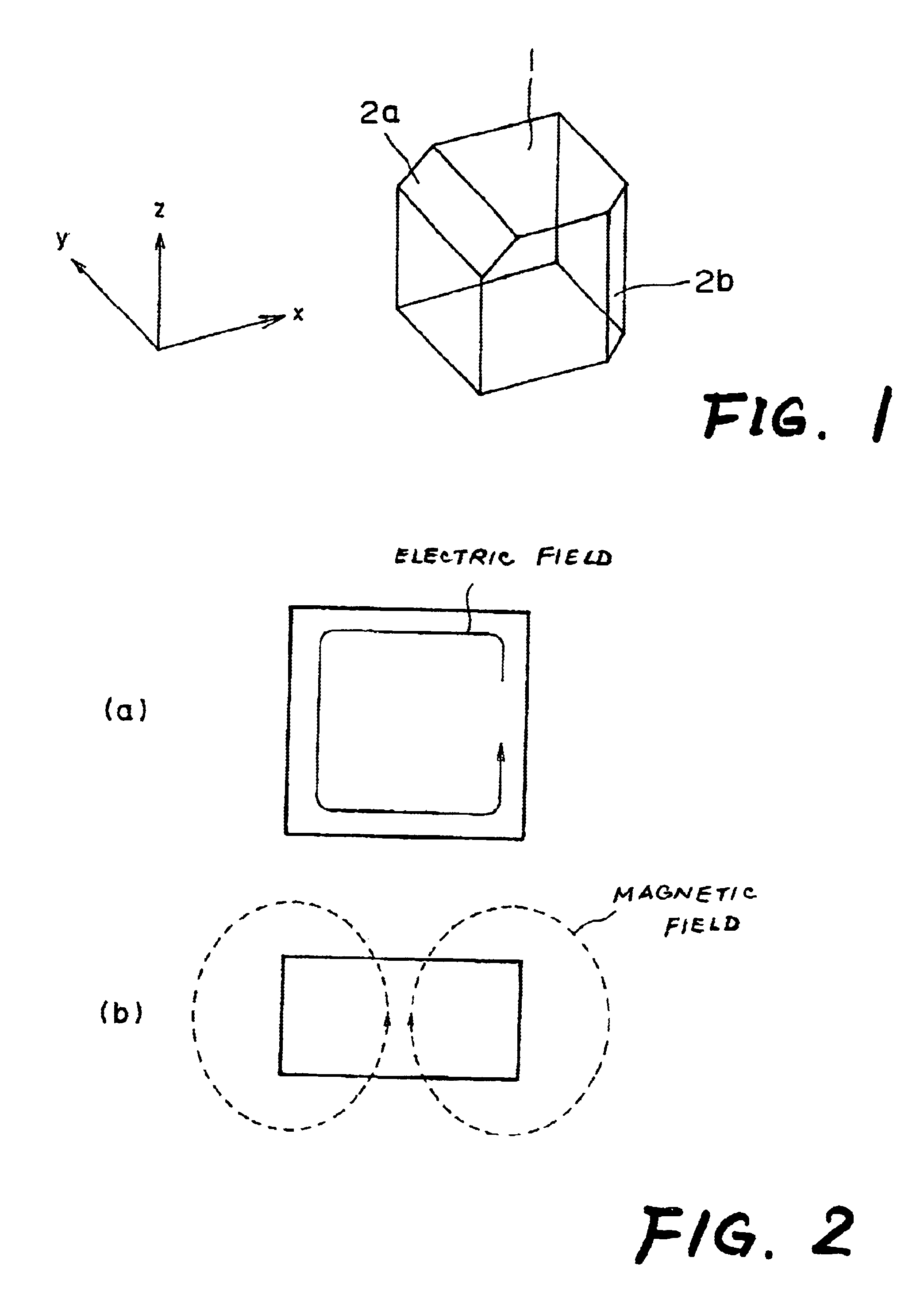Dielectric resonator and dielectric filter
a dielectric filter and dielectric resonator technology, applied in the direction of waveguide devices, resonators, basic electric elements, etc., can solve the problems of filter price increase, filter size reduction, and filter loss, and achieve the effect of reducing filter size, reducing filter cost, and reducing filter cos
- Summary
- Abstract
- Description
- Claims
- Application Information
AI Technical Summary
Benefits of technology
Problems solved by technology
Method used
Image
Examples
example 2
FIG. 10 is a perspective diagram of a dielectric filter of an example 2 utilizing two of the above-mentioned triple mode dielectric resonators therein. That is, the dielectric filter of the example 2 is composed of two of the triple mode dielectric resonators shown in FIG. 1 putting a predetermined distance to each other disposed in a longitudinal cut-off waveguide 3 and rod-type antennas 8, antennas 8 having both end surfaces opened by input-output terminals 9, terminals 9 provided in a direction of axis x from the above-mentioned both end surfaces in longitudinal direction of the cut-off waveguide 3 respectively. A screw 4 contacting with upper surface of the cut-off waveguide 3 by one end is disposed between the two triple mode dielectric resonators in order to adjust the coupling between the dielectrics. Exemplary mounts 3a for supporting each resonator (dielectric block 1) are shown.
In the dielectric filter of the example 2, two of the triple mode dielectric resonators are prov...
example 3
FIG. 11 is a perspective diagram of a dielectric filter of an example 3 which is a dielectric filter utilizing the above-mentioned triple mode dielectric resonators providing a metallic partition 5 between two dielectric blocks 1 therein. That is, in the same manner as the above-mentioned example 2, the dielectric filter of the example 3 is composed of two of the triple mode dielectric resonators shown in FIG. 1 disposed in a longitudinal cut-off waveguide 3 and rod-type antennas 8, 8 having both end surfaces opened by input-output terminals 9, 9 provided in a direction of axis x from the above-mentioned both end surfaces in longitudinal direction of the cut-off waveguide respectively. In the present example, a metallic partition 5 is provided instead of a screw 4 of the example 2 between the two dielectric resonators. And as shown in FIG. 11, a surface 2b having the above-mentioned another ridge portion chamfered on one side of the dielectric block 1 is formed in a different positi...
example 4
FIG. 13 is a diagram for showing a method of adjusting the above-mentioned dielectric filter by a metal rod. Actually, a screw is used as a metal rod and the adjustment is conducted by putting in and out of the screw. The metal rod acts on a magnetic field leaking from dielectrics. As the metal rod in the position of 6a in FIG. 13 has interlinkage with magnetic flux of the resonance in the event of resonance in direction x, the magnetic field is intensified and resonant frequency becomes lower. The phenomenon is equal to a growth of equivalent inductance in a parallel resonant circuit. In the same manner, 6b lowers the resonant frequency of y direction. Conventionally, as a metal rod in a position of 6c raises the resonant frequency, frequency can be adjusted in wide range by combination of the adjustment in the three directions x, y, z. With regard to the coupling, as 7a weaken the coupling of resonance in direction x and in direction y while 7b works for intensifying the coupling,...
PUM
 Login to View More
Login to View More Abstract
Description
Claims
Application Information
 Login to View More
Login to View More - R&D
- Intellectual Property
- Life Sciences
- Materials
- Tech Scout
- Unparalleled Data Quality
- Higher Quality Content
- 60% Fewer Hallucinations
Browse by: Latest US Patents, China's latest patents, Technical Efficacy Thesaurus, Application Domain, Technology Topic, Popular Technical Reports.
© 2025 PatSnap. All rights reserved.Legal|Privacy policy|Modern Slavery Act Transparency Statement|Sitemap|About US| Contact US: help@patsnap.com



